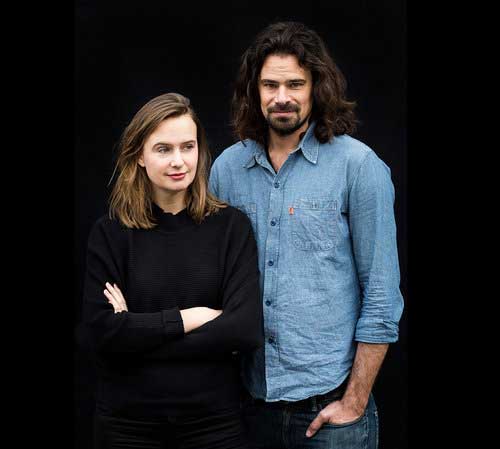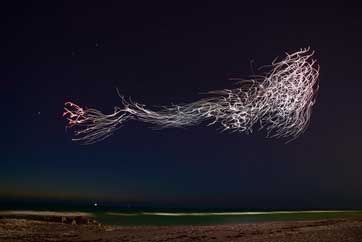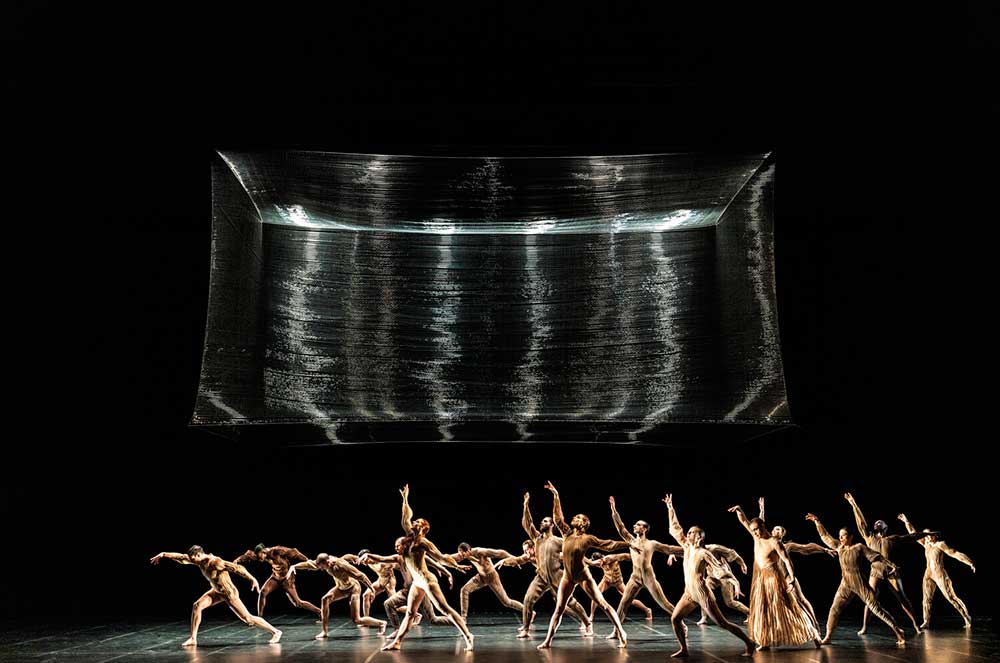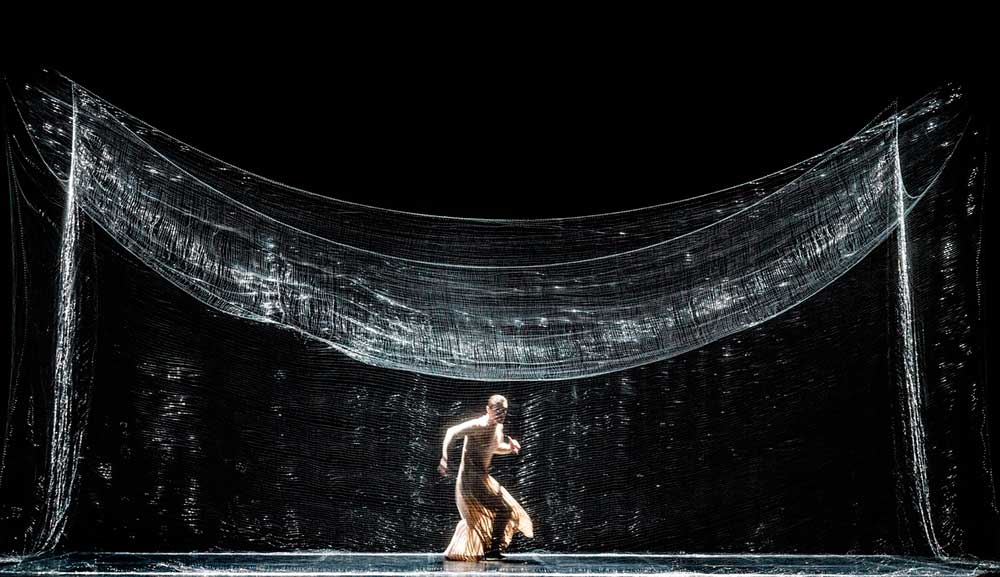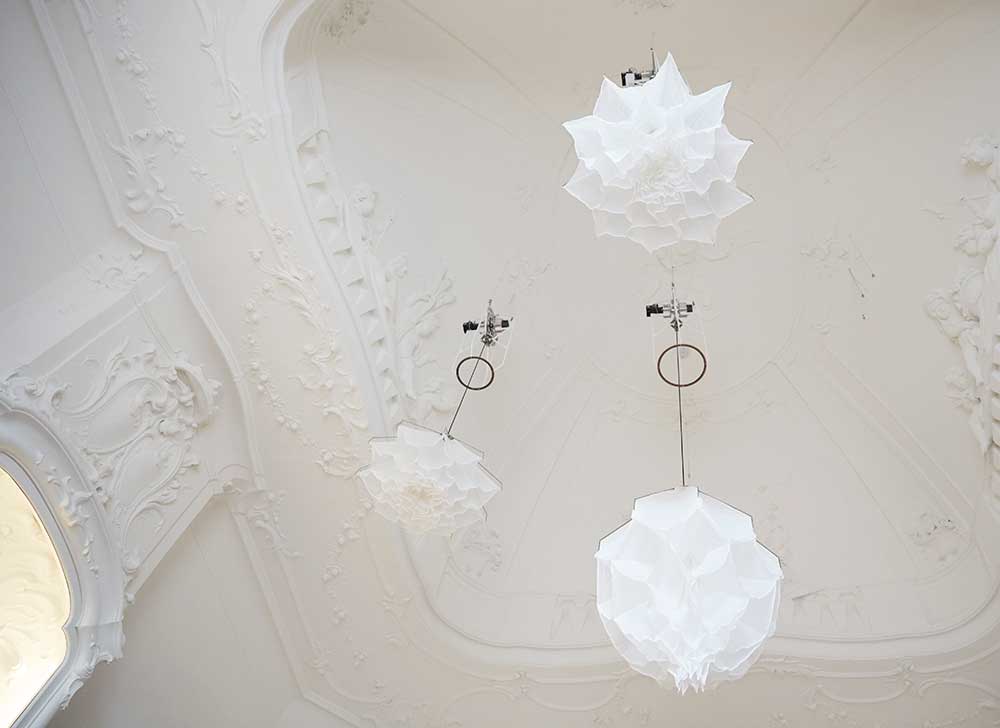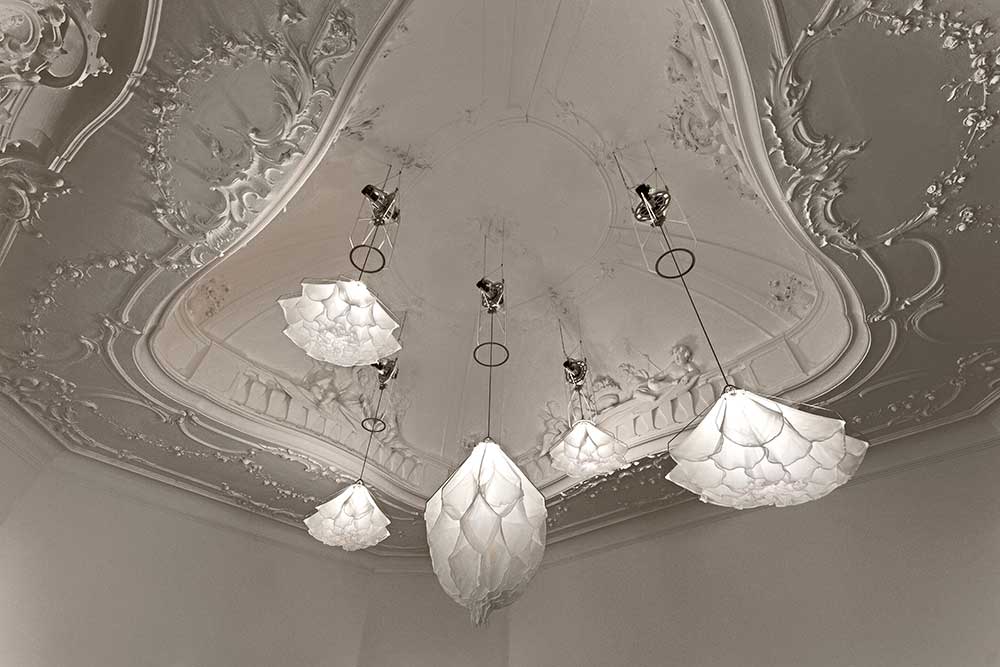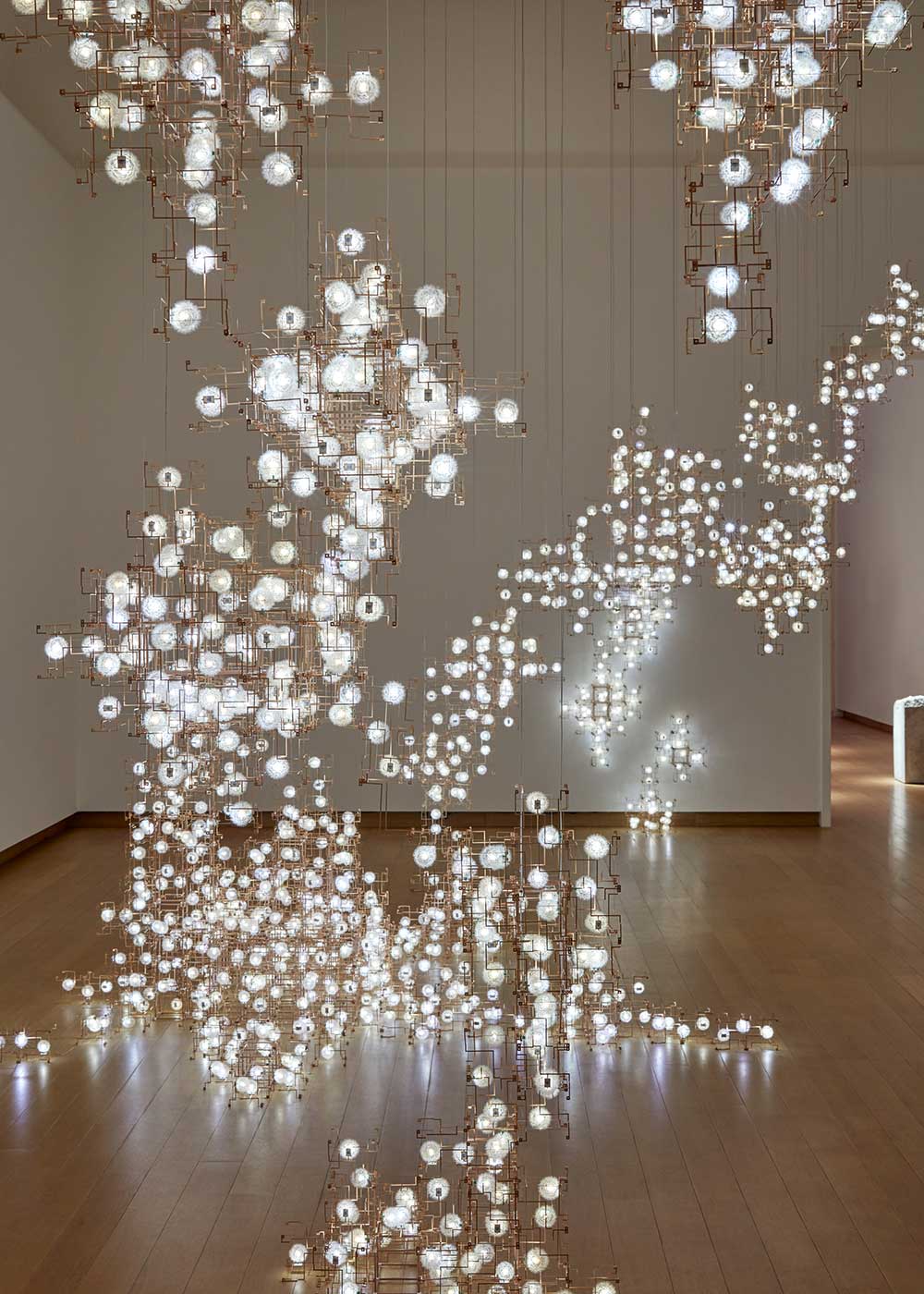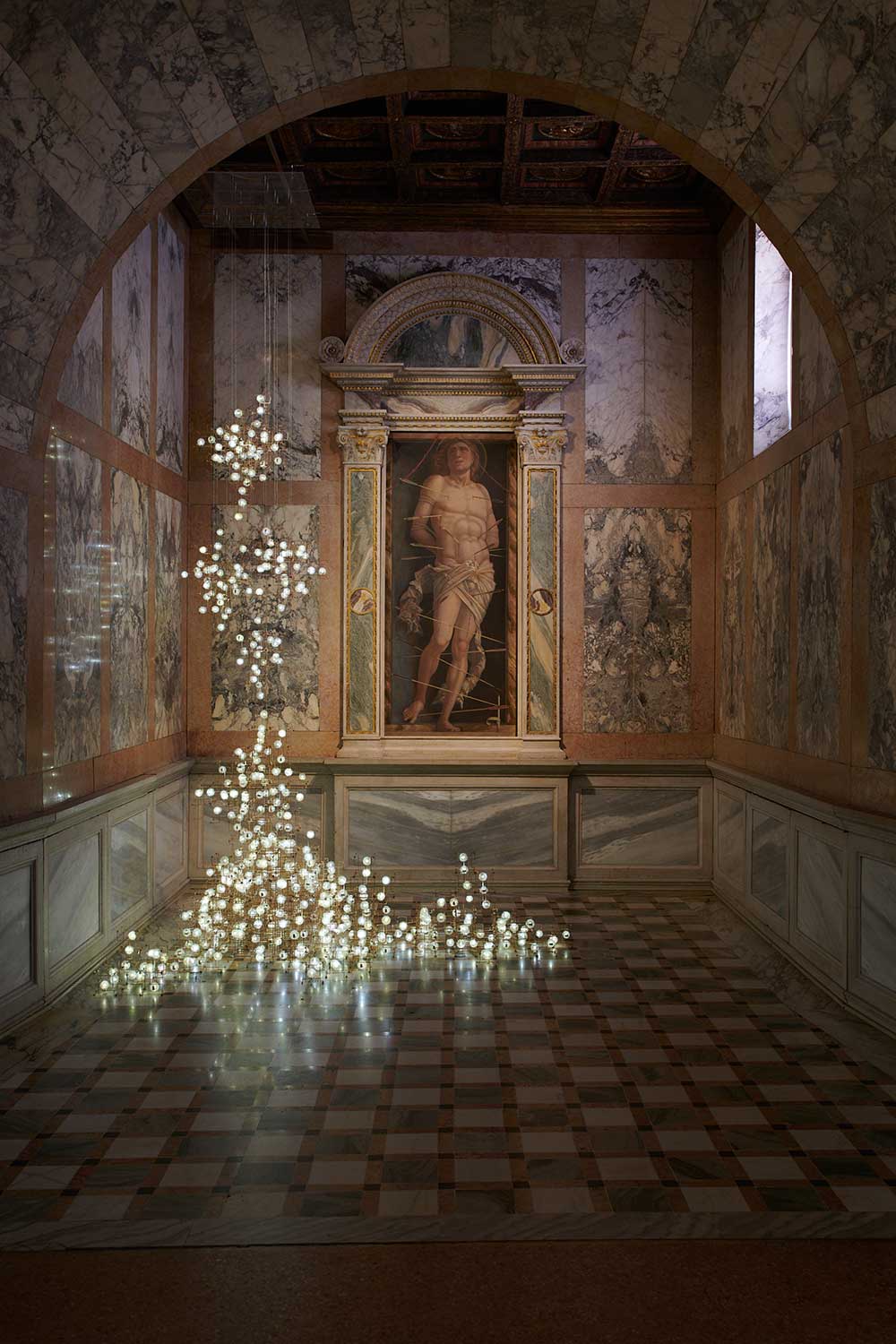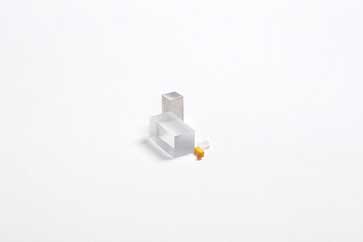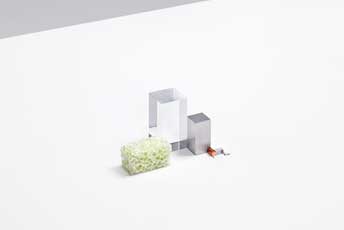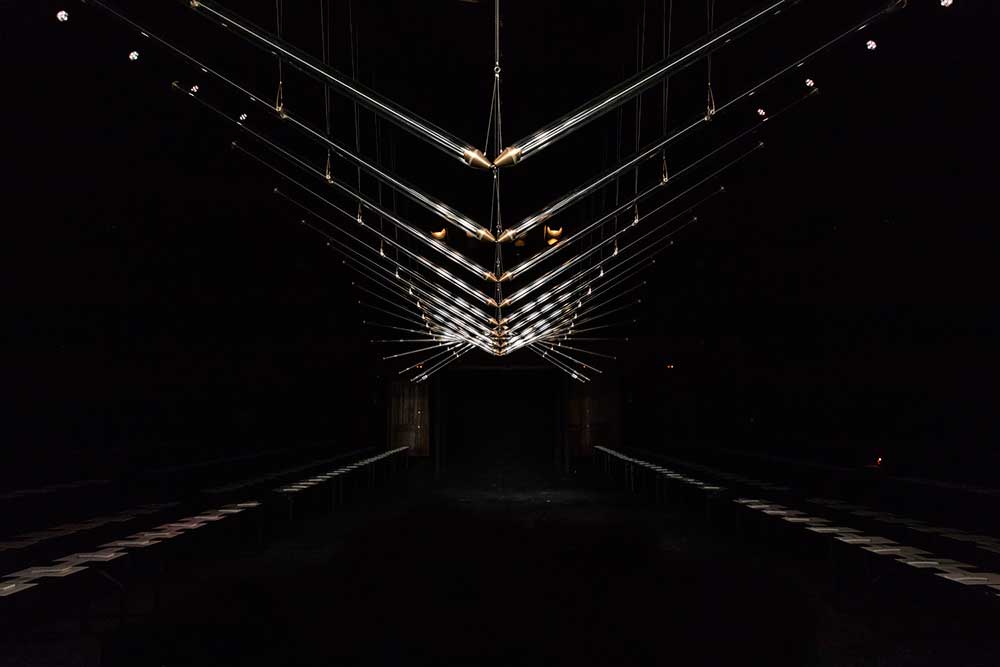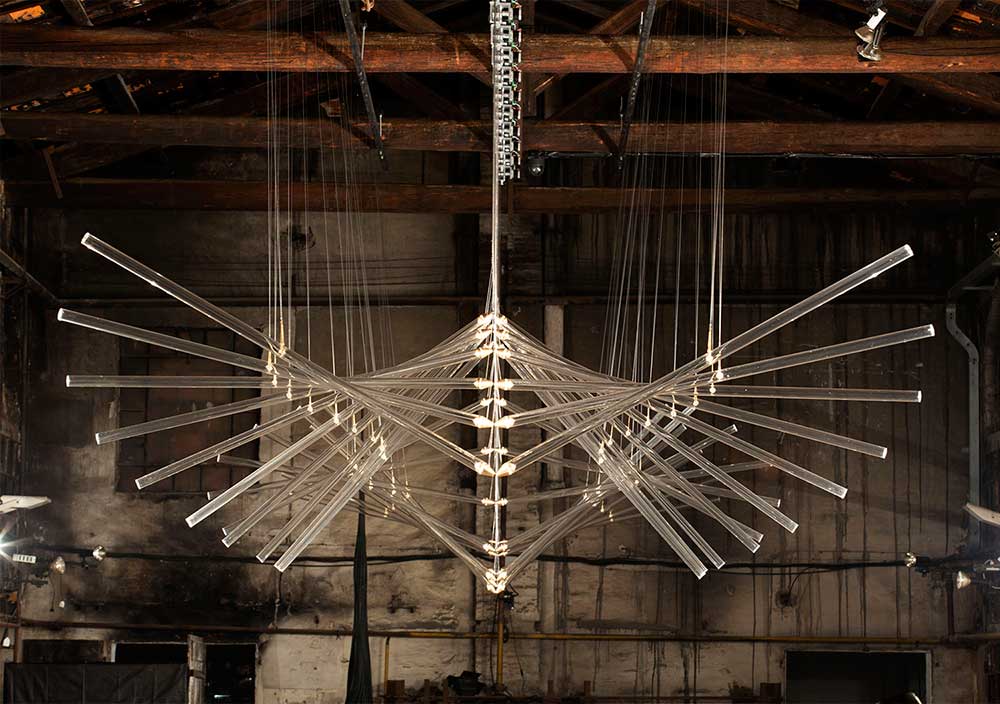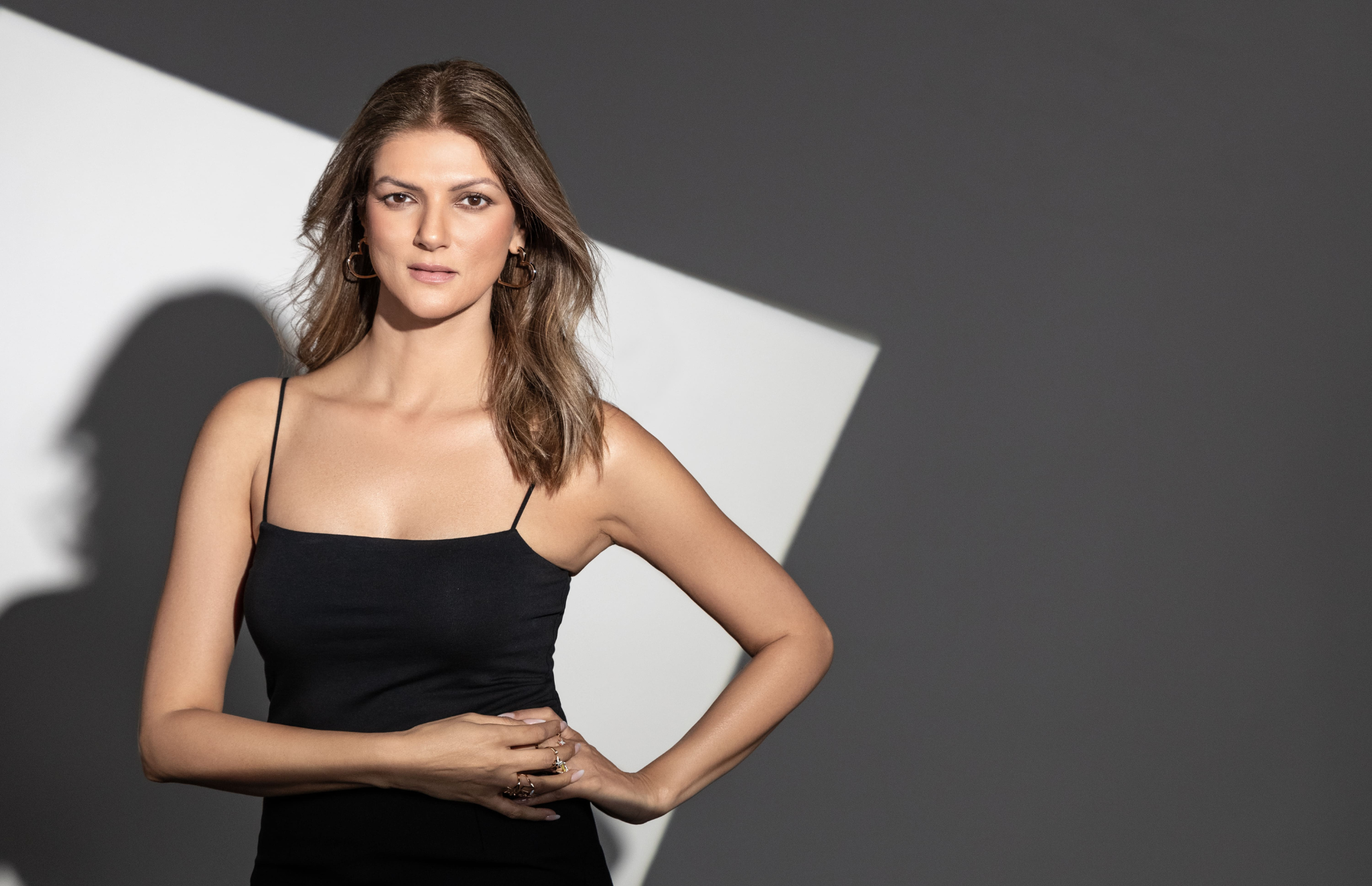Dutch artists Lonneke Gordijn (1980) and Ralph Nauta (1978) founded studio DRIFT in 2007. With a multidisciplinary team of 64, they work on experiential sculptures, installations, and performances. DRIFT manifests the phenomena and hidden properties of nature in their art with the use of technology in order to learn from the Earth’s underlying mechanisms and to re-establish our connection to it. Through both depth and simplicity, DRIFT’s works of art illuminate parallels between man-made and natural structures through deconstructive, interactive, and innovative processes. The artists raise fundamental questions about what life is and explore a positive scenario for the future. DRIFT has produced numerous exhibitions and projects around the world. Their work has been exhibited at Victoria & Albert Museum (2009, 2015); Met Museum (2010); Stedelijk Museum (2018); UTA Artist Space (2019); Garage Museum (2019); Mint Museum (2019); Biennale di Venezia (2015); Pace Gallery (2017) amongst others. Their work is held in the permanent collections of the LACMA; Rijksmuseum; SFMOMA; Stedelijk Museum; and the Victoria & Albert Museum. In 2014, DRIFT was awarded the Arte Laguna Prize, Venice.
SP: Brief Introduction and early education inspirations?
SD: We started the studio in 2007. Our first artwork was actually inspired by Lonneke’s graduation project – Fragile Future, an installation made from real dandelions. We studied at the design academy, it was a very conceptual school, we never made any functional object. Ever. Both of us really went to study design because we wanted to change the world. We like posing questions about human nature and try to give them form. We often think about how the human mind works and how people perceive reality if reality is even a reality.
SP: Who are your biggest influences?
SD: Elon Musk for sure only works on what he believes. It’s inspiring to see how his focus just pushes our world forward. When we went to the Turbine Hall together and saw the Weather project by Olafur Eliasson, it became an instant dream to show our work in the Turbine Hall.
SP: DRIFT’s work is defined by the phenomena and hidden aspects of nature through technology, re-establishing our connection to it. Would you like to elaborate on this?
SD: Nature is and will always be a starting point in our lives and in DRIFT’s artworks. Through its laws and recurring patterns, Nature offers possibilities to understand who we are and how we function. Through our artworks, we want to reflect on and understand how those natural mechanisms really work, their impact and why are the things the way they are. As humans, we are reflections of natural coincidences and thus part of Nature as a whole, but with the continuing development of the world into more complex horizons, we sometimes forget where our roots come from. We as artists want to re-establish this connection between humans and nature. During our studies we always discussed our different interests for science fiction and natural phenomena. We opened each other’s eyes to the fact that our worlds aren’t as far apart as we thought. Our work relates to spaces that remind us of being human in a rapidly changing environment where technology plays a big role. To reflect these, we merge those influences into our installations.
SP: Your kinetic sculpture ‘Ego’ was developed for the Nederlandse Reisopera’s production of L’Orfeo. Would you like to tell us about the work and its conception?
SD: In 2018, Monique Wagemakers approached us as DRIFT’s nature-inspired artworks reflect the themes of L’Orefo (1607): light and darkness; life and death. DRIFT collaborated with the director Wagemakers and choreographer Nanine Linning on a new concept, in which we had to re-think our usual way of creation and reinterpret how the audiences experience L’Orfeo – the oldest opera still performed to this day. The focus was put on Orfeo and how he relates to the challenges he is facing. Following the legend, Ego interacts with the inner world of the protagonist, enhancing the audience’s experience. The shape the block takes, the tension in its threat, the light reflections; every movement of the block was designed to reflect Orfeo’s inner journey. Orfeo is stuck in a rigid perspective of love and life, yet he eventually manages to become a better version of himself when everything collapses around him. The ego represents the rigidness of our human systems and its nuances. As Orfeo has to fight against the forces of nature, he becomes stronger and experiences a shift in his perspectives. However, in the normality of life, he is unable to use this strength and cannot step out of his original perspectives.
SP: Your projects and work have spanned experiential sculptures, installations, and performances, choosing to manifest itself through architecture or the public sphere. What role do audiences play in their viewing of or interaction with your works?
SD: Creating performance demands a different way of attention. Performance pieces offer certain advantages of creating permanent work. As the work is only visible for a certain period of time at a specific location you have to make an effort to be part of it or forever miss the moment. The work then becomes a time capsule that you share with a certain group of people. This connection that is created between the group that experienced this together can still be shared and contemplated. This strong bond is more valuable than any physical object as it can only be revisited in your mind. It is a very personal experience.
SP: What artworks and/or artists do you count as your inspiration?
SD: Among the artists that inspired our work, we distinguish James Turell, Christo. And JR.
SP: What are you working on at the moment; how has the ongoing pandemic and its effects on everyday life affected your practice?
SD: Artists are used to dealing with unexpected situations. In these times, especially, we believe people are looking for hope for a better future. Because we are forced in this situation of isolation, connection and sharing using technology at hand become instantly super important. The most important value that we share in our studio is to see solutions and not limitations. In our work, we experience technology as something that makes the impossible possible and we notice our public positively responding to this.
SP: Please share a few recent video clips/links to your work?
SD: Please find the videos of the following artworks attached in the email:
– Fragile Future
– Ego
– Shylight
– Franchise Freedom
SP: What’s your vision for the future?
SD: Our work is meant to inspire people to use their resources to reconnect with Earth. We are not looking to make them scared of the future, but to join in creating a better one, a future where we are all going back to our roots. We would like to be a platform for new technology to show the world they can be used for beauty and natural human connectivity. As we need to immerse ourselves with these positive experiences to open our minds and feel that there is a different path than the one we are currently walking. We believe our generation should develop technology more on instinct and intuition rather than on physical possibilities. We hope that the generation to come will play an active role in meaningful, human-centered technological developments, looking for paths different from the ones we are already walking.
Image courtesy: Studio Drift, Erik Smits, Marco Borggreve, Rahi Rezvani, Paul Blind, and Yannis Vlmos
Find out more about the Artist:
https://www.studiodrift.com/work
https://www.studiodrift.com/video-s
https://www.youtube.com/watch?v=CFjtJBGlKM8
https://www.pacegallery.com/artists/studio-drift/


